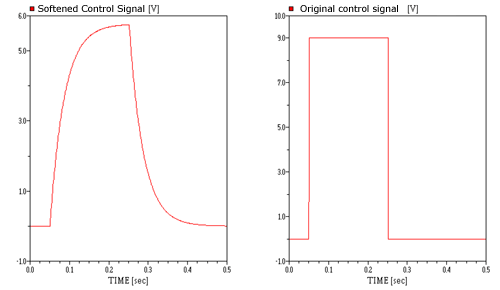 Experiment #01
Experiment #01 Experiment #01
Experiment #01
This is a little test I did between CMOS Switches CD4016 and CD4066. Both have the same function and pinout, but work somewhat different. The idea was to test how this ICs worked with slow-attack control voltages
(CV), regarding poping noise issues in particular.
I've read somewhere that the 4066 can only hard switch, while the 4016 is able to cope with a soft CV (being the cause of this different buffering of the CV between the ICs). The experiment confirmed this.
Here's the schematic of the setup used: Click on the image to enlarge
SW2 is a latch SPST switch, used to provide the CV. Resistor R4 keeps the control input of the switch at 0v (OFF) while SW2 is open. When closed, R3 and R4 form a voltage divider, so the CV goes to 6v aprox (ON) With the adittion of capacitor C3 I was able to get a slow ramp (more like a sawtooth) when switching on/off, instead of the sudden change provided by SW2. The time constant for switching on is
C3*R3=56msec. The time constant for switching off is C3*R4=100msec. SW1 is one of the sections of the CMOS Switch.
This is how the CV's look like (on simulation):

CD4016:
With the 4016 this configuration resulted in a click-free switching action. Worked good even replacing R1 with a 1M resistor to cause some voltage difference between the input and output. When I replaced C3 with a 1uF cap, all it did was delay the action a little bit (The action takes place a few milliseconds after SW2 is pressed). Also, when I removed C3, the action was pretty much the same as with the original cap.
CD4066:
I tried then the 4066 on the same original configuration: it made huge pop sound when switching, worse with the 1uf cap on C3. But removing C3 resulted in an almost click-free, clean action. It was a little worse when I tried the 1M resistor for R1, but not too much.
Conclusion:
The 4016 can cope with soft and hard CV, with little difference in any case. Meanwhile the 4066 makes loud pops when used with soft CV, and should only be used with square CV (mostly derived from other CMOS chips like the 4013 or 4017).
So take a look at what you use for deriving Control Voltages. There are some discrete flip-flop circuits that provide slow action and can cause a 4066 to pop
(I learned that the hard way).
Miguel Canel, Buenos Aires, Argentina bioroids.miguelNOSPAM@yahoo.com.ar (Quitar NOSPAM) http://www.bioroids.com.ar
bioroids.miguelNOSPAM@yahoo.com.ar (Quitar NOSPAM) http://www.bioroids.com.ar